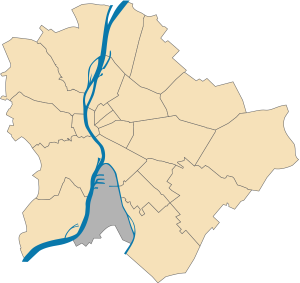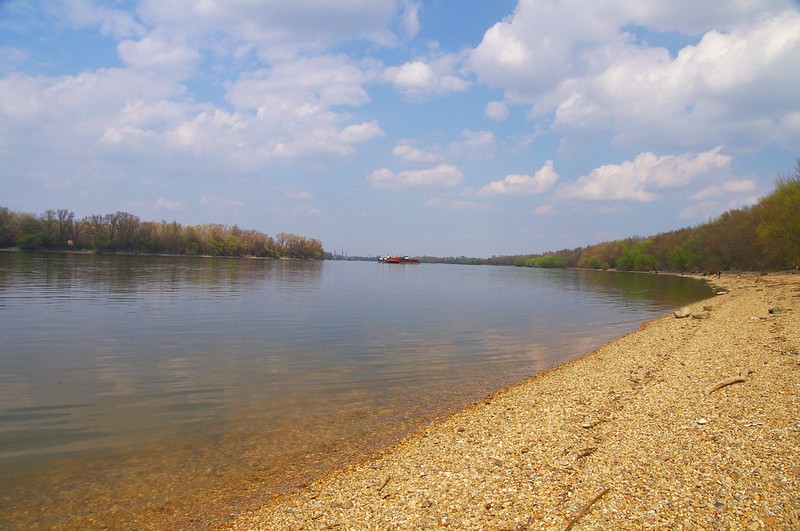Csepel: Budapest’s Industrial Jewel Turned Cultural Haven
Csepel, the 21st district of Budapest, has transformed from its industrial roots to a cultural and recreational hub. Situated on Csepel Island in the Danube River, the district offers a blend of nature, history, and modern attractions that are unique within the city.
Introduction
Once known primarily for its industrial significance, Csepel has emerged as an appealing destination that captures the essence of both old and new Budapest. With its numerous parks, historic landmarks, and modern amenities, Csepel is a must-see for any tourist interested in a well-rounded experience.
Location

An Island Retreat
Csepel is a unique district in Budapest, situated at the northern tip of Csepel Island in the Danube River. Covering just one-tenth of the island’s area, it is the only complete district in Budapest that is neither part of Pest nor Buda. With the Danube River to the west and the Ráckevei-Duna (Ráckeve’s Danube) east, Csepel is a water-bound paradise offering a different city experience.
Natural Borders and Neighbors
The district is flanked by the settlements of Szigetszentmiklós and Lakihegy to the south, creating a sense of seclusion while still being part of the bustling capital. With approximately 85,000 residents, Csepel is a thriving community that offers both the charms of island living and the conveniences of city life.

A Water-Lover’s Paradise
Being surrounded by water, Csepel is a haven for water sports and activities. Whether you’re into kayaking, fishing, or simply enjoying a leisurely boat ride, the district offers many options to get you on the water.
Community and Culture
Despite its island location, Csepel is far from isolated. The district is home to a vibrant community and offers a range of cultural activities. There’s always something happening in Csepel, from local festivals to art exhibitions.
Geography
As the largest island in the Danube River, Csepel Island is the geographic highlight of the district. Its flat terrain makes it ideal for cycling and walking tours.
A Protected Gem in the Heart of the City
Tamariska Hill, located in the Royal Forest, has been a natural sanctuary under the capital’s protection since 1999. This area is a treasure trove of biodiversity, featuring a variety of sandy flora and fauna, including several species listed in the Red Book and Pannonian endemics.
A Haven for Nature Lovers
The hill and its surrounding forest offer a tranquil escape for nature enthusiasts. Whether you’re a botanist, a birdwatcher, or simply someone who appreciates the great outdoors, Tamariska Hill provides a unique opportunity to encounter rare species in their natural habitat.
NATURA 2000: A Seal of Importance
Adding to its significance, the nearby Ráckevei (Soroksári) Danube and the (Great) Danube have been designated as “Areas of Special Importance for Nature Conservation” within the NATURA 2000 network, according to Decree 45/2006 (XII.8.) of the Minister of Environment and Water Management. This makes the area a local treasure and a site of European ecological importance.”Adding to its significance, the nearby Ráckevei (Soroksári) Danube and the (Great) Danube have been designated as “Areas of Special Importance for Nature Conservation” within the NATURA 2000 network, according to Decree 45/2006 (XII.8.) of the Minister of Environment and Water Management. This makes the area a local treasure and a site of European ecological importance.
Why Tamariska Hill is a Must-Visit
If you’re passionate about nature conservation or simply looking for an idyllic spot to unwind, Tamariska Hill in the Royal Forest is a must-visit. Its status as a protected area and its inclusion in the NATURA 2000 network make it a significant site for both local and international nature lovers. Come and explore this ecological gem and discover the natural wonders that make it a vital part of Budapest’s environmental heritage.

Landmarks
Notable landmarks to explore in Csepel include:
- Csepel Plaza: A modern shopping center that offers a variety of retail and dining options.
- Csepel Bath and Wellness Center: A perfect spot for relaxation and rejuvenation.
History
A Geological Marvel:
Csepel Island is a geological wonder, formed in the Holocene era about 10,000 years ago. The island’s sand is identical to the Danube’s, a testament to the river’s role in shaping this unique landscape.
A Storied Past:
Csepel’s history is deeply intertwined with the Hungarian nation. According to ancient chronicles, the Hungarian leader Árpád invaded the island shortly after the region’s conquest. Over the years, the island has seen its share of historical upheavals, from being a serf village in the 12th century to its repopulation in 1712 after a series of calamities.
Industrial Revolution:
The late 19th and early 20th centuries marked a period of significant industrial growth for Csepel. The Weiss brothers established a cartridge reconditioning workshop in 1892, laying the foundation for the later giant Csepel Works. The opening of the Csepel National and Free Port between 1912 and 1927 turned the district into a hub of Danube shipping.
Modern Transformation:
Since its annexation to Budapest in 1950, Csepel has dramatically transformed. The district has seen a surge in population and the rapid development of housing estates and public institutions. Today, it stands as one of the most prosperous districts in the capital, boasting multi-billion investments in infrastructure and public spaces.
Green and Family-Friendly:
Csepel takes pride in its numerous parks and recreational areas, such as the newly revitalized Crane Hill, Királyerdő, and the unique Families’ Park, covering an area of 25,000 square meters. These developments align with the district’s strategy to enhance its family-friendly character.
International Relations:
Csepel maintains strong international ties, particularly with its twin towns in Transylvania and Poland. The district has a rich history of Hungarian-Polish solidarity, including the significant role Csepel played in supporting the Polish fight for independence in the early 20th century.
Education
Csepel is home to various educational institutions, offering a range of options from elementary schools to adult learning centers.
Museums
Among the district’s cultural offerings are:
- Csepel Museum: This museum offers insights into the district’s industrial past, featuring old machines, photographs, and artifacts.
Twin Towns
Csepel has several twin towns, including:
- Rijeka (Croatia)
- Poland Kielce (Poland)
- Romania Nagyszalonta (Transylvania)
- Poland Szczecin (Poland)
- Romania Tusnádfürdő (Transylvania)
- Romania Vámosgálfalva (Transylvania)
- Poland Wolomin (Poland)
Google Maps of Csepel (District 20)
Conclusion
Csepel provides a unique glimpse into Budapest’s transformation from an industrial powerhouse to a modern city with diverse attractions. Whether you’re interested in history, shopping, or simply soaking in the local culture, Csepel offers a multi-faceted experience that will enrich your Budapest journey.